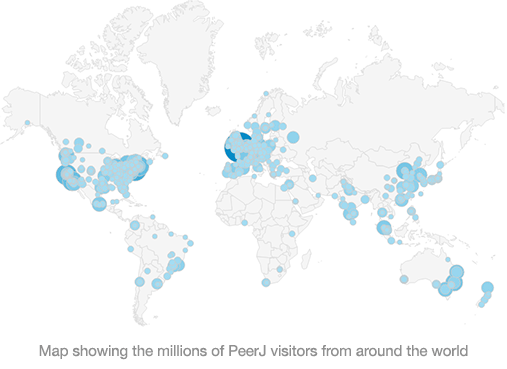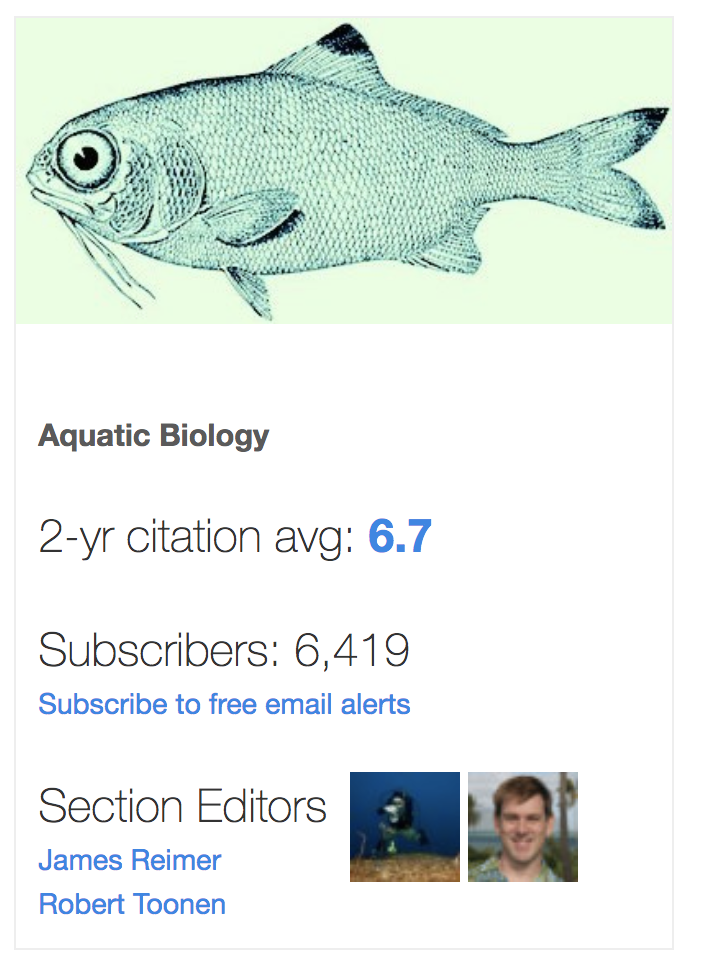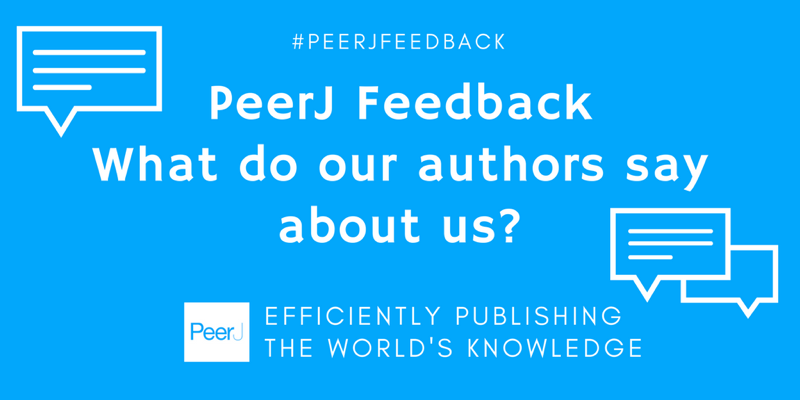In this post, we’d like to share how we provide high visibility for your research. PeerJ takes a number of deliberative steps to ensure that your research receives a large and global reach. We’ve taken the best of traditional publishing methods and combined them with modern innovations to accomplish high visibility and discoverability for PeerJ papers.
PeerJ journals have received 17.6 million views and downloads and have a global reach of 500,000 monthly readers.
Here are some of the key steps we’ve taken to achieve high visibility for your work:
1. Indexing. When our journal articles are published, they are indexed in a range of leading databases. Being indexed in these databases means your research gets noticed and its chance for discoverability is increased. To that end, we have ensured our articles are indexed in all major abstracting & indexing databases.
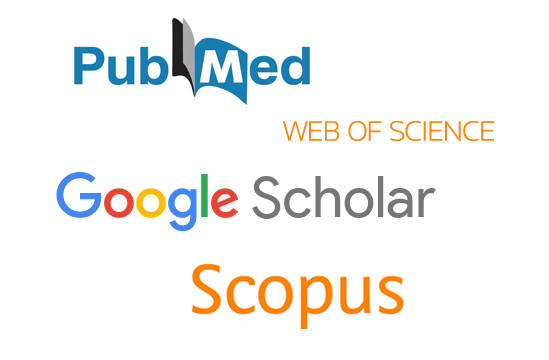 PeerJ – the Journal of Life and Environmental Sciences is currently indexed in PubMed, PubMed Central, Scopus, Web of Science (Science Citation Index Expanded), Google Scholar, the
PeerJ – the Journal of Life and Environmental Sciences is currently indexed in PubMed, PubMed Central, Scopus, Web of Science (Science Citation Index Expanded), Google Scholar, the
DOAJ, the ACS databases, EMBASE, CAB Abstracts, Europe PMC, Biological Abstracts, BIOSIS Previews, AGORA, ARDI, HINARI, OARE, the ProQuest databases, EBSCO databases, and OCLC.
PeerJ Computer Science is indexed in Google Scholar, dblp, CiteSeerX, the ESCI (the Emerging Sources Citation Index, part of the Web of Science), Scopus, the DOAJ, the ProQuest databases, OCLC, and ScienceOpen.
PeerJ Preprints is our non-peer-reviewed venue covering biology, medicine, environmental sciences and computer science. It is indexed in Google Scholar and each preprint has a unique DOI for citation purposes.
2. Internet era discovery. Journals are, in most cases, no longer read cover to cover. To maximize discovery in our modern Internet era where general search engines are often used to find research, it takes more than indexing in the traditional academic databases alone.
 To solve that, we’ve designed and built the PeerJ website and article pages with an eye towards implementing modern machine-readable microdata markup and navigation. In non-tech jargon that means major search engines are able to build rich snippets of information from PeerJ data, such as author biographies, that then turn up in search results. PeerJ’s website and articles are also mobile-friendly, providing today’s researcher access to the scientific record while out in the field.
To solve that, we’ve designed and built the PeerJ website and article pages with an eye towards implementing modern machine-readable microdata markup and navigation. In non-tech jargon that means major search engines are able to build rich snippets of information from PeerJ data, such as author biographies, that then turn up in search results. PeerJ’s website and articles are also mobile-friendly, providing today’s researcher access to the scientific record while out in the field.
A prime example of how researchers today are heavily using search engines for reviewing the literature is the search engine Google Scholar that sifts specifically through scholarly literature. Researchers using Google Scholar can now also quickly find, view and bookmark abstracts on their mobile phones with the newly launched Google Scholar Quick Abstracts feature.
3. Social media and spreading the word. Through our Twitter and Facebook feeds, website, blog, newsletters, content alerts and communications with our authors and readers, we reach an even wider group of scientists and science enthusiasts. We also actively help authors promote their own papers by providing tips and helping them with social media and other electronic and traditional means of sharing their research.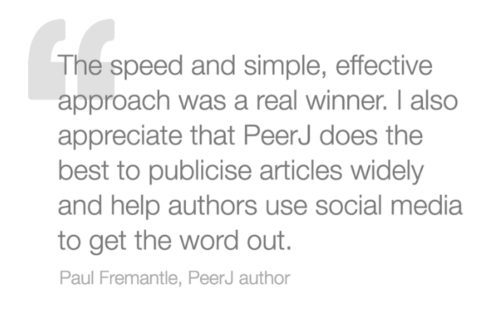
4. PeerJ Sections. Through PeerJ’s newly formed sections, readers can find the latest publications in their field, discover related research and connect with others engaged in similar research. This connection with a wider community increases discoverability and helps further scientific progress – one of our key missions as a science publisher.
Our Aquatic Biology section is featured as a sample below. Find all section pages here.
5. Archiving and permanence. We archive our content at PubMed Central; and use two industry standard services called CLOCKSS/LOCKSS and Portico, of which PeerJ is a member. Authors can rest assured that their research will be archived for future generations.
We invite you to join the thousands of PeerJ authors who know their work will be indexed globally, fully discoverable and permanently archived.
Yours in Science! –The PeerJ Team

